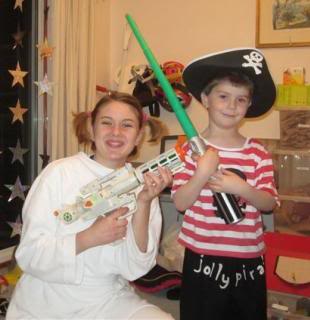
What is, "Everyone should feel safe in their home"? Principle? Value? Boundary? Limit? Priority? Operating parameter?I responded:
Principle.The idea of a child feeling safe in his own home was mine, from years ago. It became standard in the discussions, as a premise. Parents should keep EACH child safe, in that unschooling nest.
Environmental condition of nest-building that an unschooling parent should consider.Too many times, a mom has come and asked us to untangle a repeating situation in which one child's "rights" are being protected at the expense of another child. The mom wasn't seeing a way to define the conditions so that safety came before "freedom" (of expression, of movement, of something that was endangering or irritating or scaring another child).
Nothing is guaranteed. What will keep a child safe in his own home is parental vigilance, and parental awareness of what they're being vigilant about.
Dangerous furniture, wild visitors, sharp objects left down low, might "violate the principle," then. It's not just about how to manage child behavior, but how to keep a child safe in his own home.
Outside of there, the parents don't have control over what's where, and can only choose to be in a place, or not, or to hold the child (if he's small enough) or be right there ready to separate the child from the fire/water/tools/cactus/cliff.
The cliff was the running analogy in the discussion from which the quotes came, which was here, at Radical Unschooling Discussion, on facebook, in 2019, about rules and principles and boundaries.
Marty needs to be safe in his own home.(out of the middle of something about how I neutralized fights between my kids, at When Siblings Fight)
"I'm not going to let anybody hurt anybody else. Everybody should feel safe in their own home."
Shelter doesn't only mean a roof; it means a safe place of peace and healthfulness.
"I can spend my energy on limiting my child's world so that he will be safe and happy or I can spend my energy on helping my child learn the skills to navigate our world himself so that he will be safe and happy. I think the latter has a better chance of success in the long term."
"He should be safe in his own home" is a good thing to remember about a child. It can be said to visitors, to siblings, and reflexively to oneself when making a decision. An adult partner should be safe in his own home, too.
Safe from what?
Safe from cruelty and shame. Safe from shocking disturbances, if possible. Safe from zombies. Safe from the fear that his partner will leave him. Safe from the fear that he will be separated from his children.
Safe to eat foods he likes. Safe to watch sports on TV, or to have some time alone in the workshop.
Safe from being controlled. This is a big one. If the "control force" is great with you, maybe use it to control your own clutter or organize your papers or rearrange your books or clothing. File your photos. Don't turn that awful control beam on people you love.
And "safety" beyond "not dangerous."
Mental health beyond "not legally insane."
(Sandra, notes for the talk "Happiness Inside and Out", 2012; the recording is there, but I might not have said what was in my notes, exactly.)

For me, safety is big.
Peace doesn't conflict with learning; it aids it.
Kindness doesn't conflict with learning; it bolsters it.
Learning, peace and kindness make marriages better.





